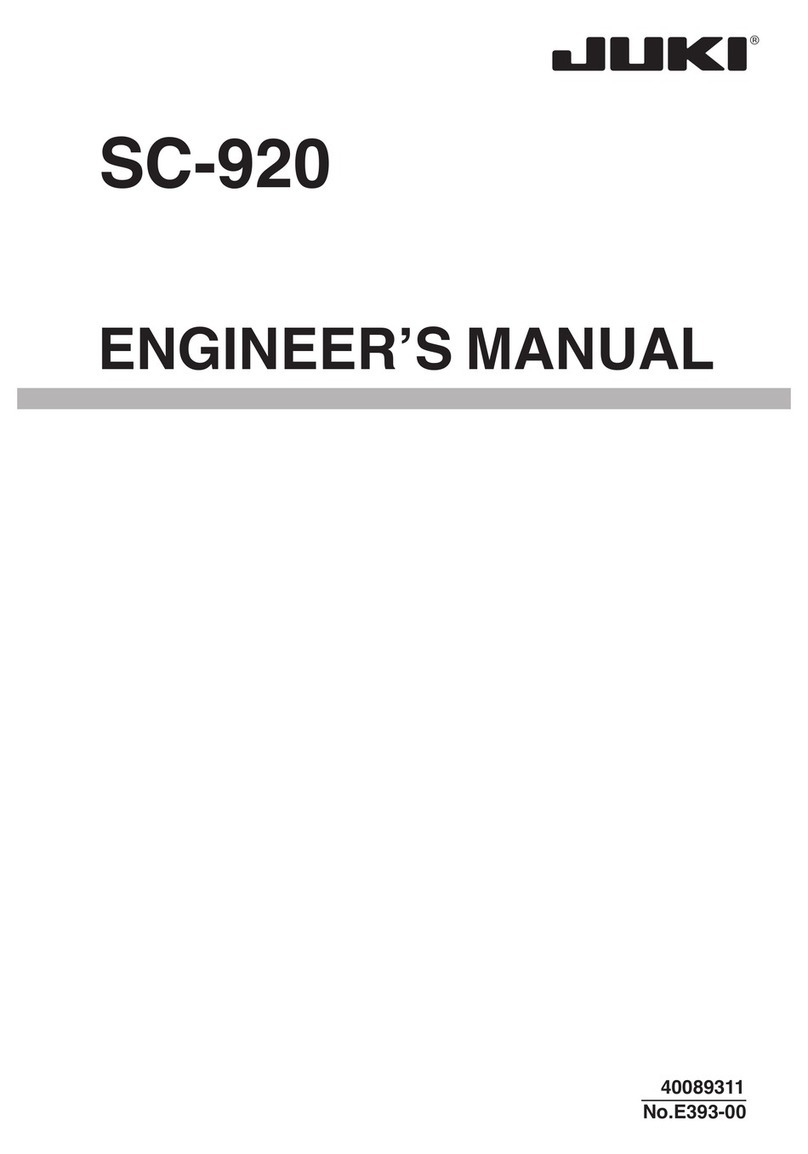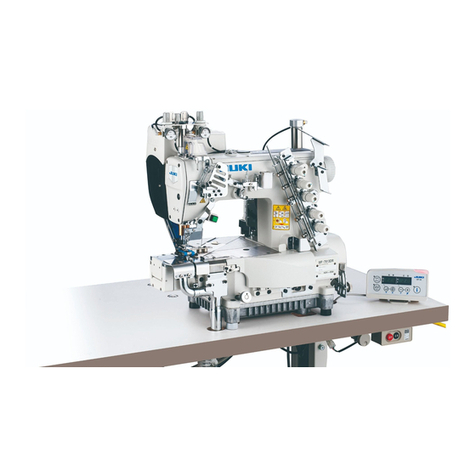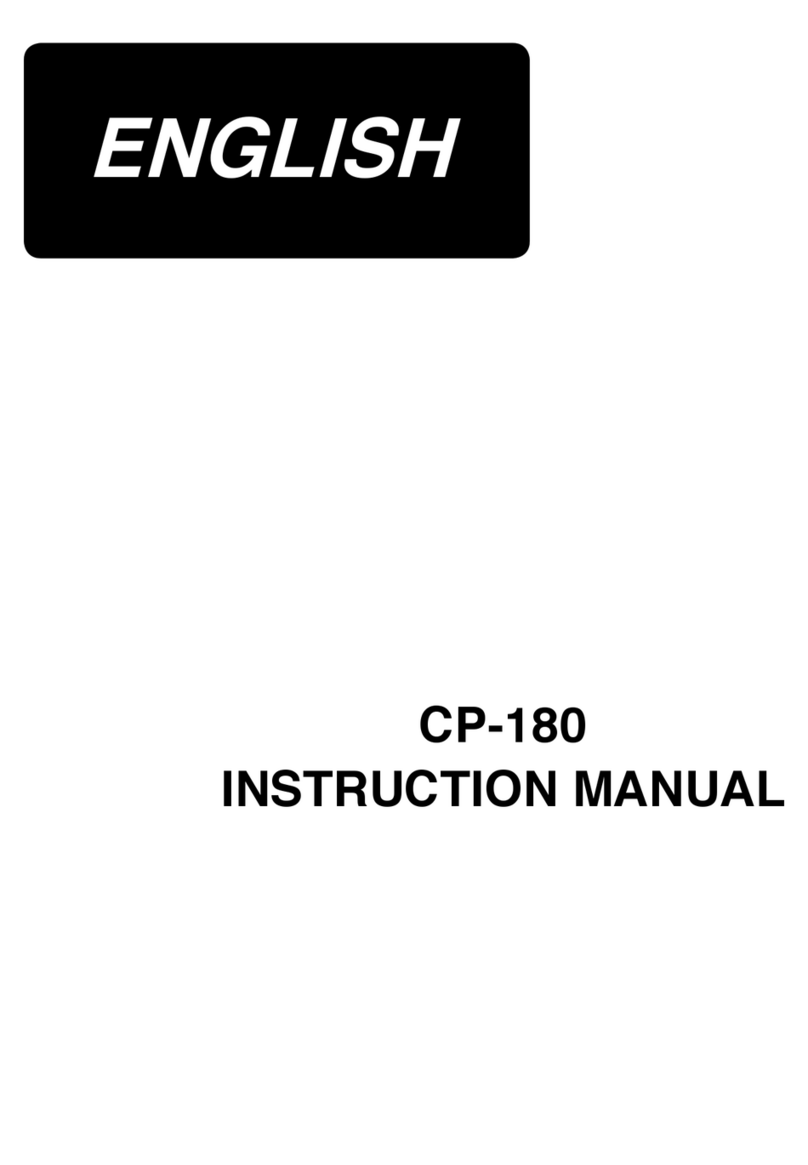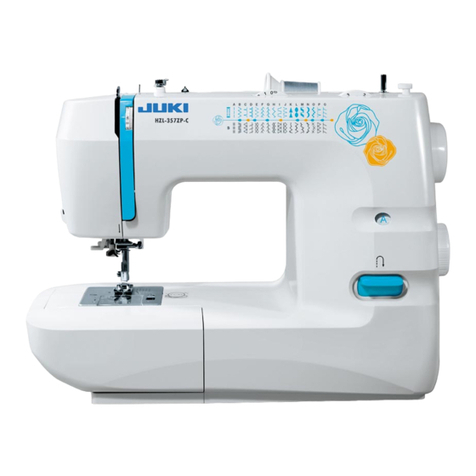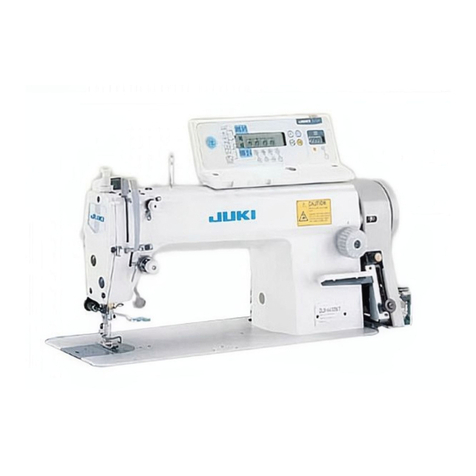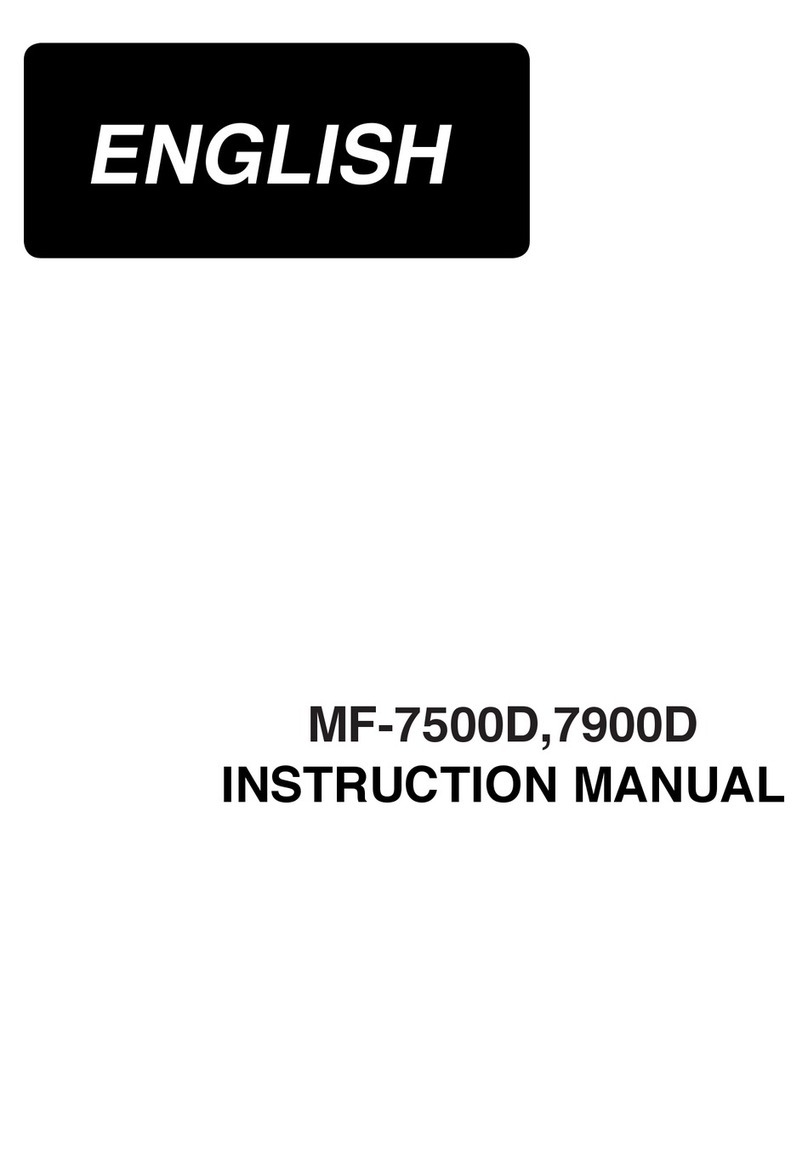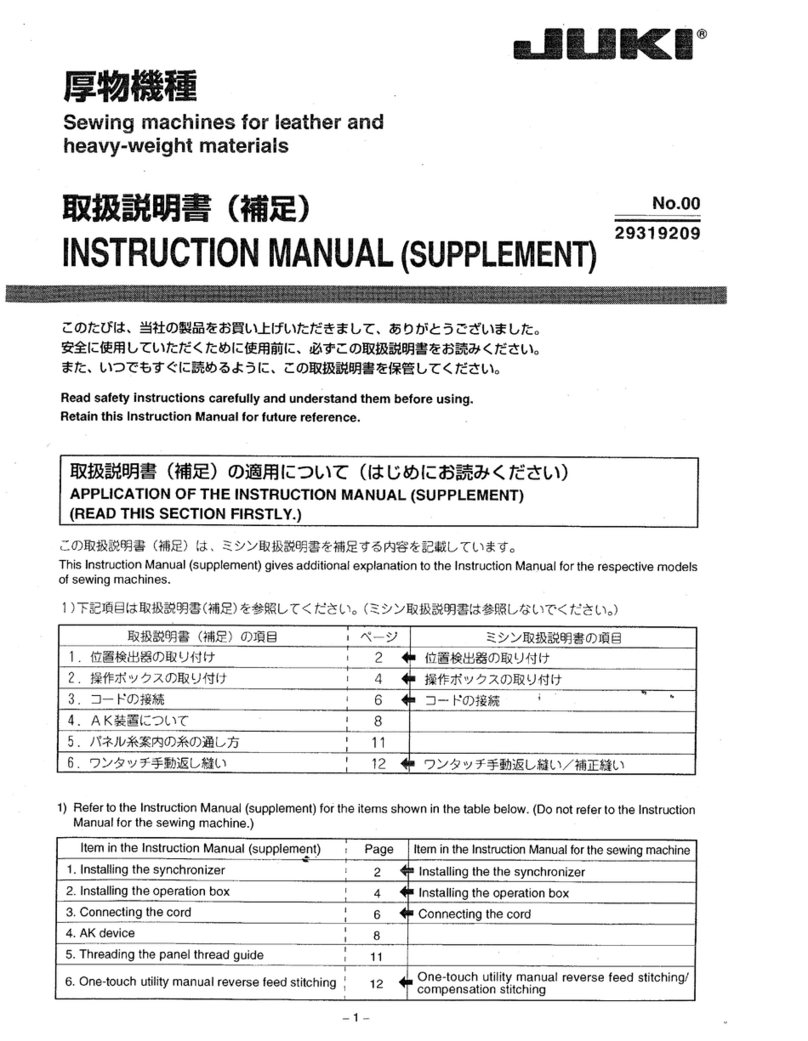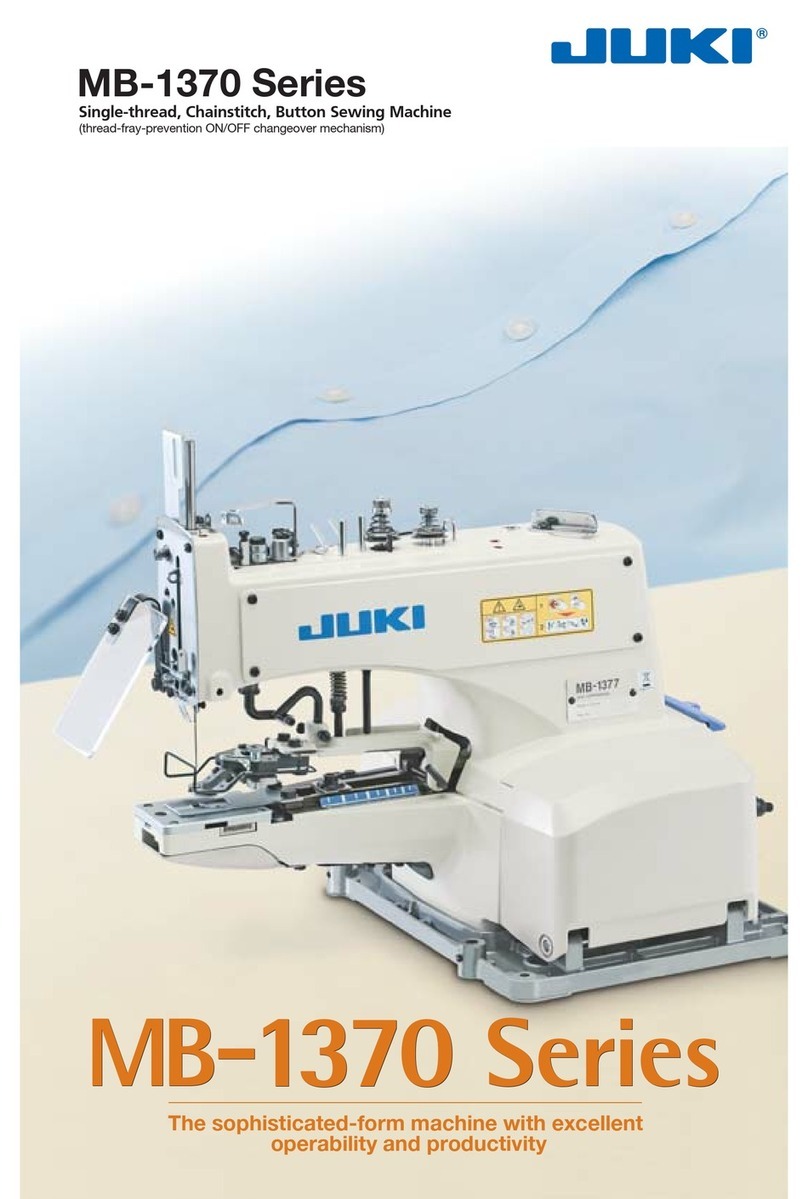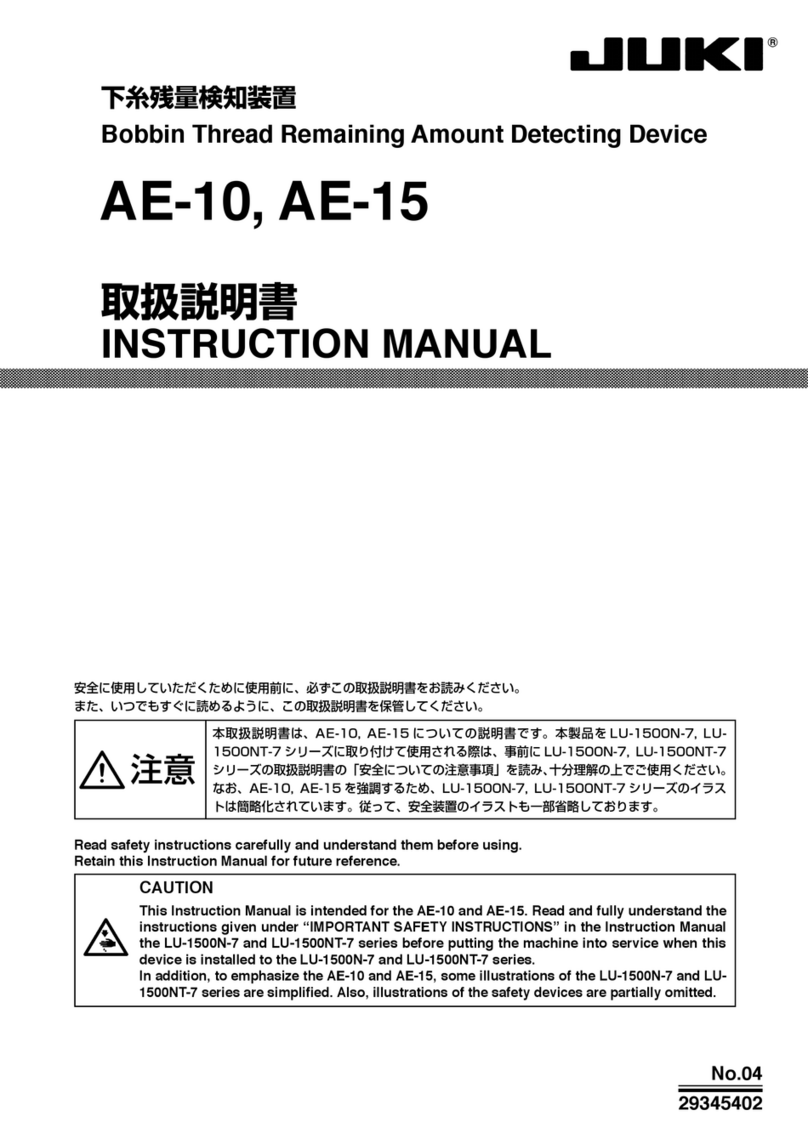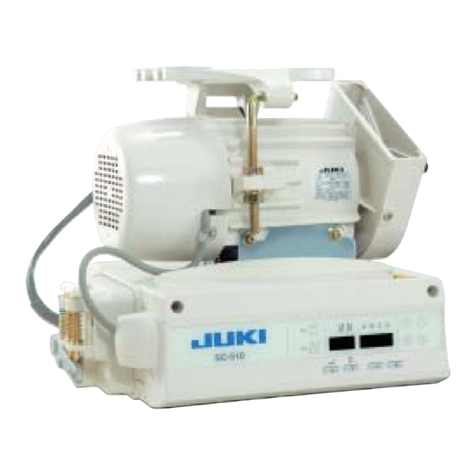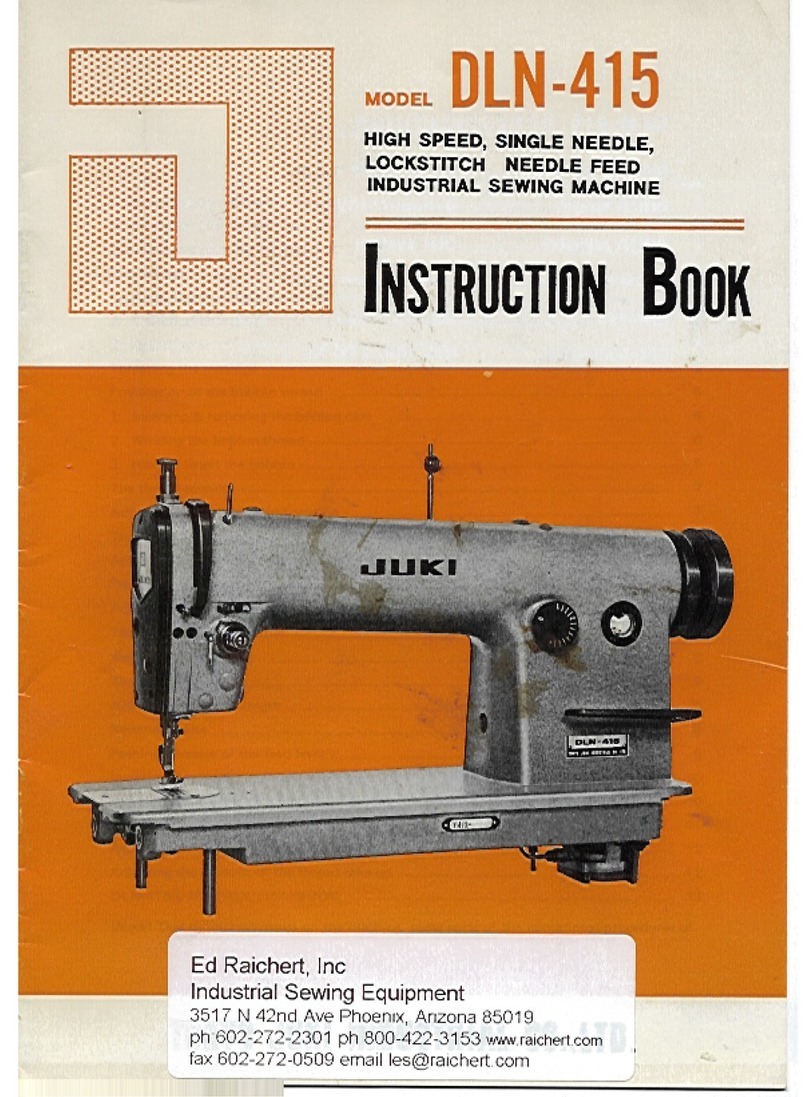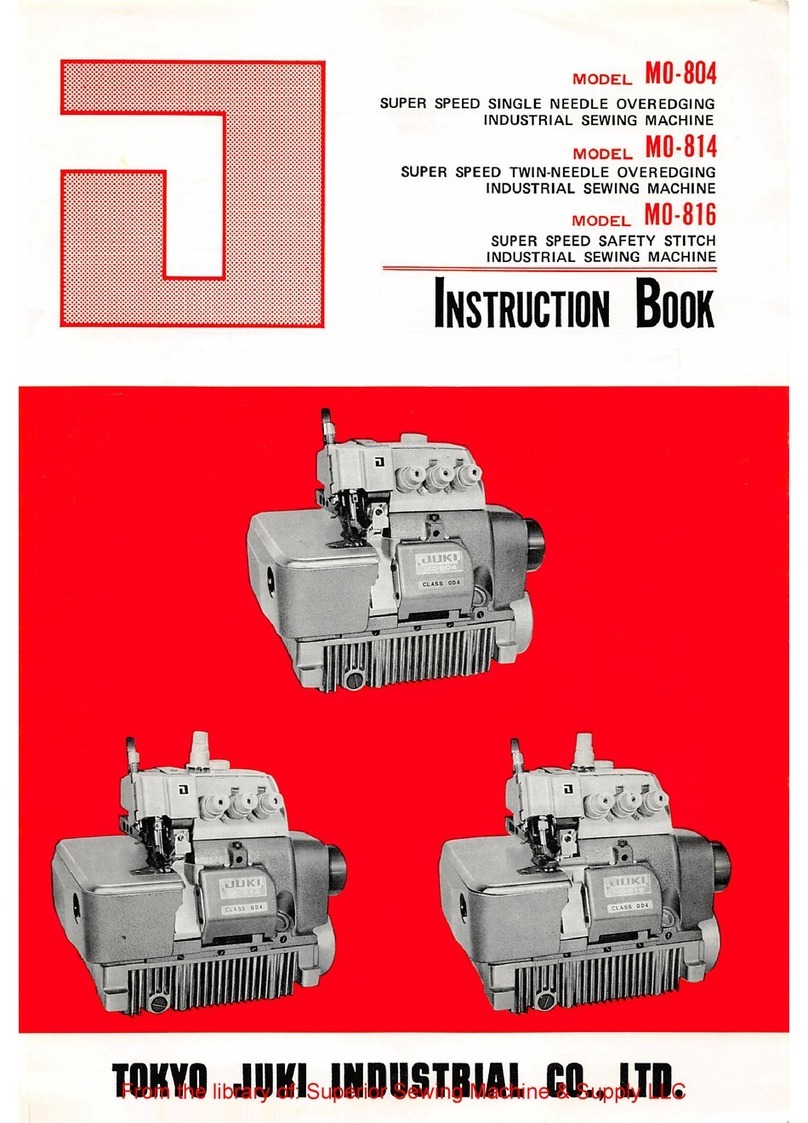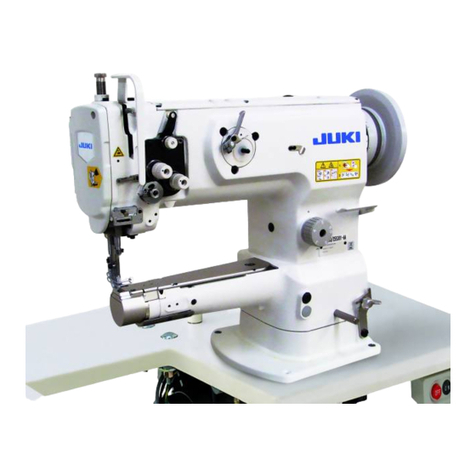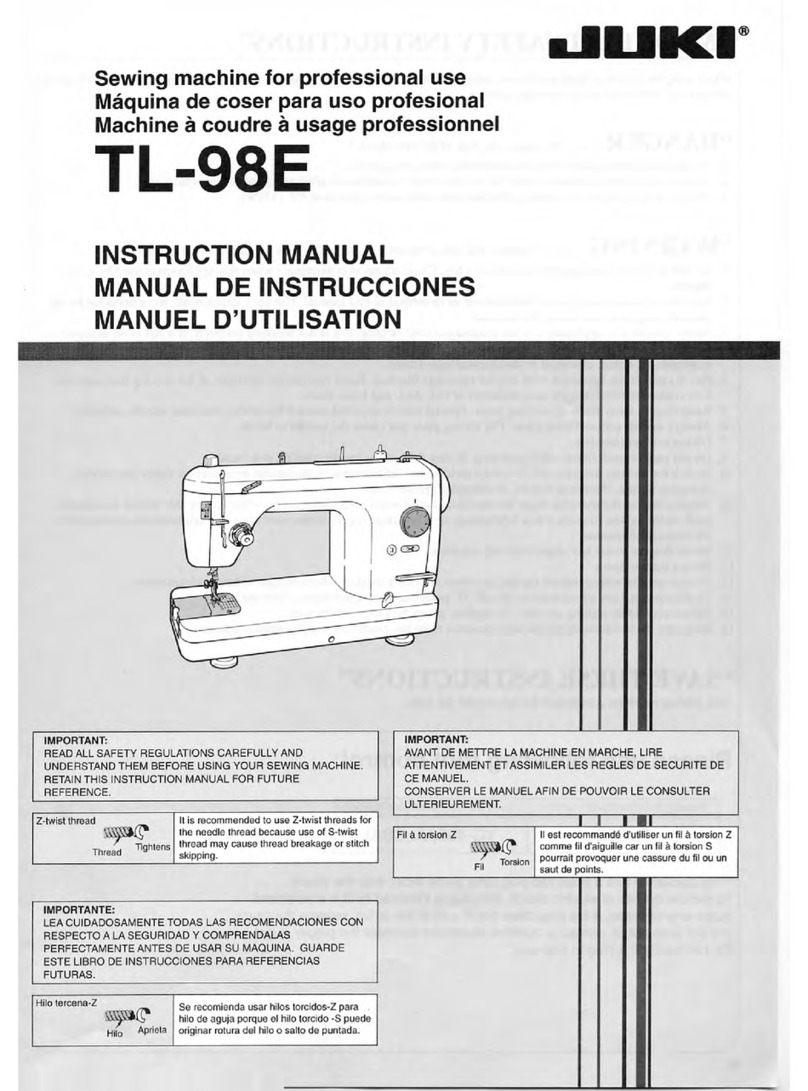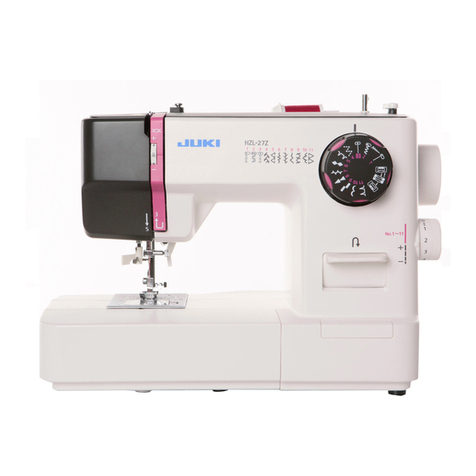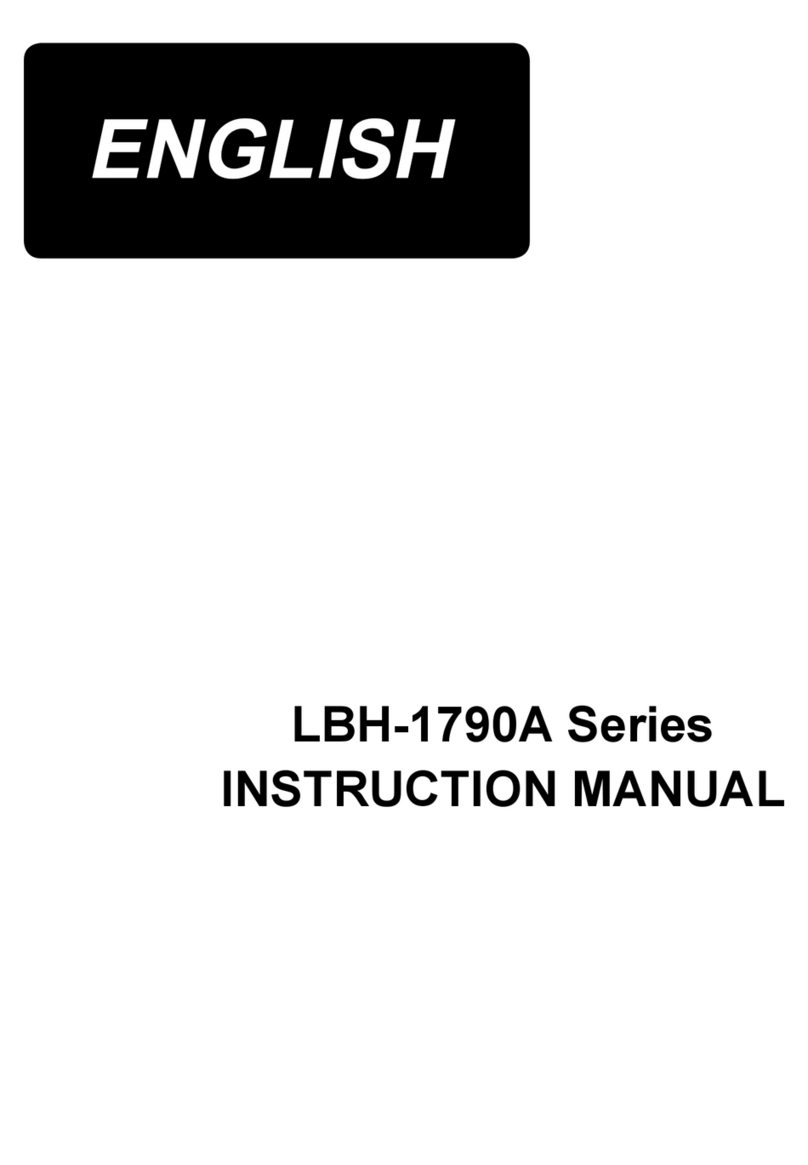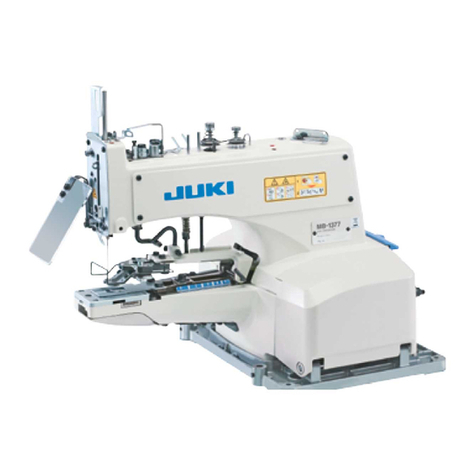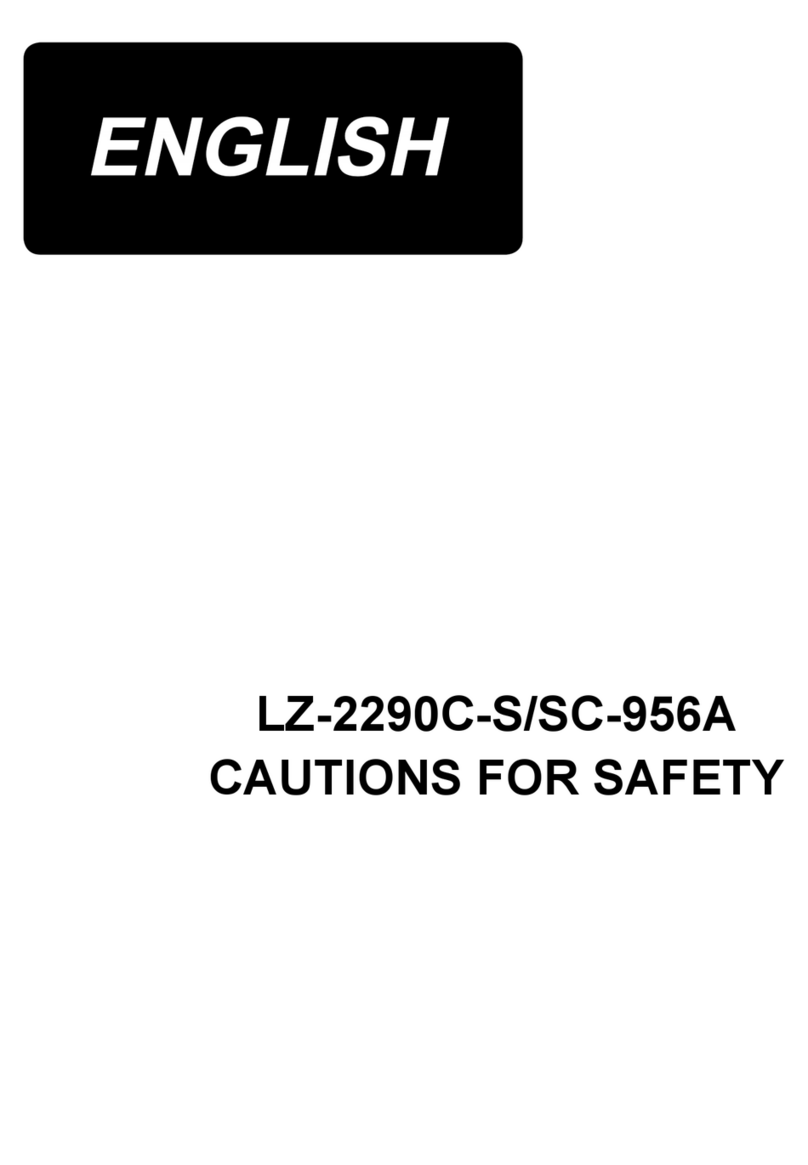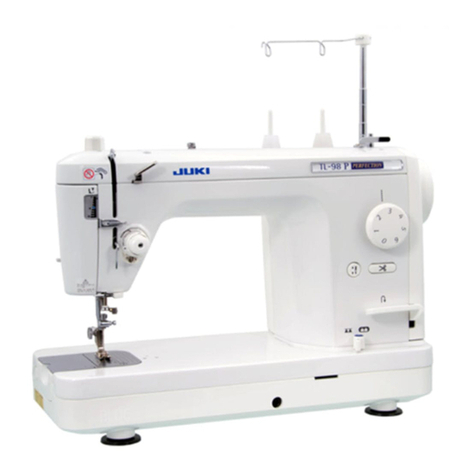9
Important safety instructions ………………………………… 1,2
Principal parts …………………………………………………… 13, 14
Accessories …………………………………………………………… 15
Basic operations
Function of operational buttons ……………………………… 16
Connecting to the power supply ………………………… 17, 18
Name and function of other operational buttons … 19, 20
Speed control ………………………………………………………… 27
Presser foot lifting lever …………………………………………… 28
Changing the presser foot ………………………………… 29~32
Bobbin thread preparation ………………………………… 33~35
Needle thread preparation ……………………………… 36~40
Threading the needle thread
Automatic needle threader
Pulling up the bobbin thread
Attaching the needle ………………………………………… 41, 42
Fabric, thread and needle table ……………………………… 43
How to adjust thread tension ……………………………… 45, 46
How to lower feed dog …………………………………………… 47
How toselect astitch pattern ……………………………… 48~50
Practical sewing
Straight stitch …………………………………………………… 51~52
How to use seam guide line on the throat plate
How to change needle positions
How to change the stitch length
Automatic lock stitch and programmed thread trimming
Other straight stitch patterns
Zigzag stitch …………………………………………………………… 58
Overcasting stitch ……………………………………………… 59, 60
Buttonhole stitches …………………………………………… 61~68
Standard buttonholing
Keyhole buttonholing
Buttonhole with gimp
When changing the width of the buttonhole
When changing the density of the seam
Bartacking ………………………………………………………… 69, 70
Shirring and gathering ……………………………………… 71, 72
Pintucking ……………………………………………………………… 73
Welt seam ……………………………………………………………… 74
Decorative stitches and one point pattern ………………… 75
Scallop stitches ……………………………………………………… 76
Contents
Patchwork quilt
Applique …………………………………………………………… 77, 78
Quilt ……………………………………………………………………… 78
Decorative stitches
Sewing letters and one point pattern ………………… 79~83
Preparation before stitching ……………………………… 79
Test sewing ………………………………………………………… 80
How to select patterns (letters) …………………… 81, 82
How to stitch a pattern (letters) ………………………… 83
Disposing thread ends of jump stitches
How to sew combined sewing patterns
continuousl……………………………………………………………84
…………… 83
Optional accessory parts
Introduction of optional accessory parts ……………… 85~88
How to install wide table ………………………………………… 89
Blind stitch ………………………………………………………… 90~92
Inserting zippers ……………………………………………… 93~96
Side zipper attachment
Butted zipper attachment
How to use quilt guide ……………………………………………… 97
Stitch in ditch quilting ………………………………………… 98, 99
Quilting (straight stitch) ………………………………… 100, 101
Quilting (free motion) …………………………………… 102~104
List of stitch patterns ……………………………………………… 105
Machine maintenance …………………………………… 106, 107
Performance check list …………………………………… 108, 109
Specifications …………………………………………… back cover
